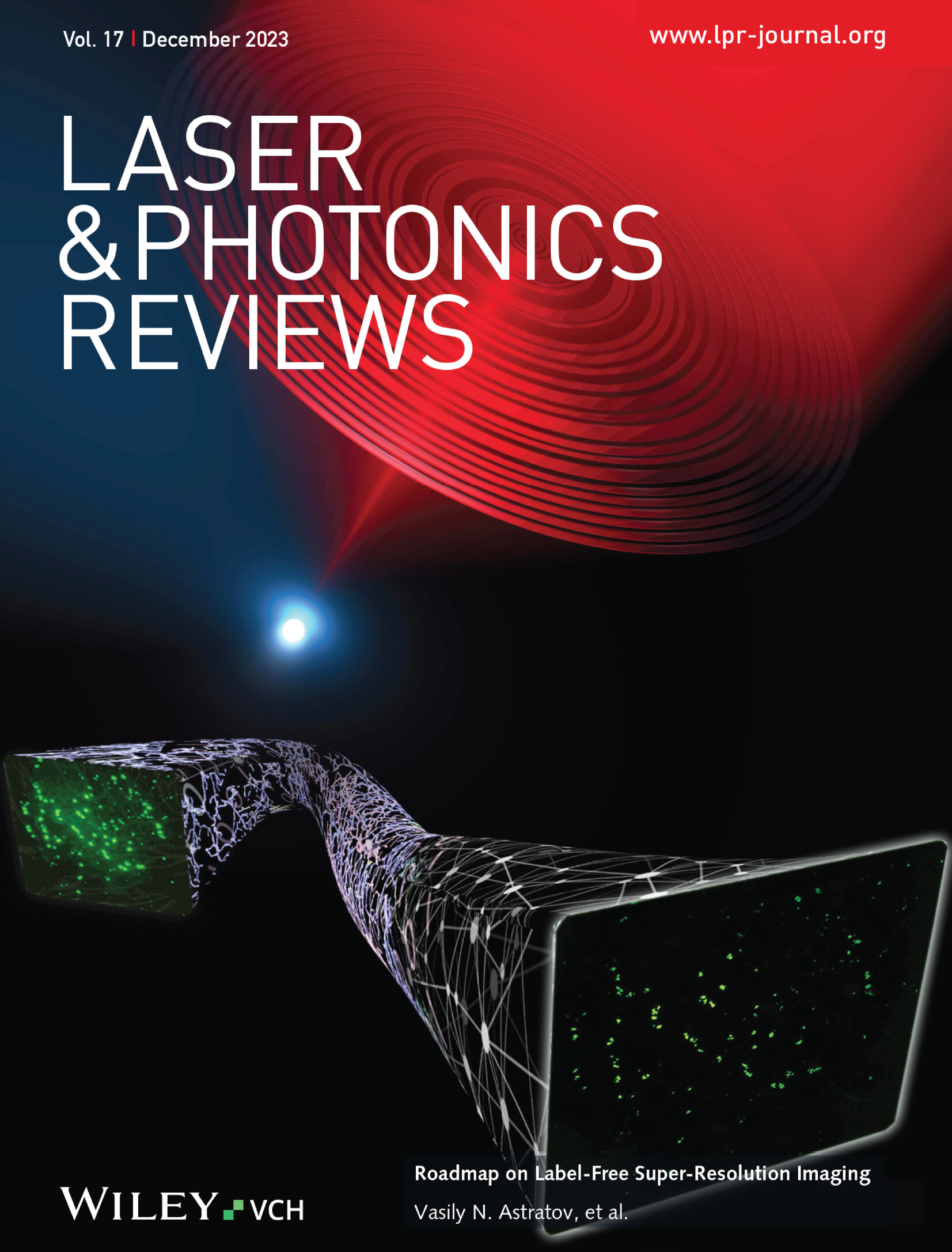Nonlinear Transverse Mode Conversion Based on Ferroelectric Domain Engineering in Thin Film Lithium Niobate
IF 9.8
1区 物理与天体物理
Q1 OPTICS
引用次数: 0
Abstract
The transverse mode of a waveguide is an emerging degree of freedom of photons, and the nonlinear frequency conversion of which is essential to construct multi-dimensional multiplexed photonic integrated circuits for high-capacity optical communications. The challenges of nonlinear conversion of waveguide modes are to simultaneously fulfill the phase-matching conditions and maximize the nonlinear overlap integral. In this work, a scheme is proposed to achieve waveguide mode conversion based on 2D ferroelectric domain engineering in the emerging integrated photonic material platform of thin-film lithium niobate (TFLN), where the longitudinal periodic distribution of the second-order nonlinearity ensures the quasi-phase-matched frequency conversion between the guided-modes; while the transverse distribution can maximize the nonlinear overlap integral. As a proof-of-principle experiment, a nonlinear waveguide is designed and fabricated with 2D ferroelectric domain structure on a Z-cut TFLN, and demonstrates the conversion from TM00 mode of the fundamental wave to TM10 mode of the second harmonic wave. Efficient nonlinear conversions from TM00 mode to high-order modes are numerically verified. The proposed nonlinear guided-mode conversion scheme has the advantages of flexible design, high conversion efficiency, and scalability, and will lay the foundation for the development of classical and quantum photonic chips with multiple degrees of freedom.

基于铌酸锂薄膜铁电畴工程的非线性横向模式转换
波导横模是一种新兴的光子自由度,其非线性频率转换是构建高容量光通信的多维复用光子集成电路所必需的。波导模式非线性转换的挑战是同时满足相位匹配条件和最大化非线性重叠积分。在新兴的薄膜铌酸锂(TFLN)集成光子材料平台上,提出了一种基于二维铁电畴工程实现波导模式转换的方案,其中二阶非线性的纵向周期性分布保证了波导模式之间的准相位匹配频率转换;而横向分布可以使非线性重叠积分最大化。作为原理验证实验,在Z-cut TFLN上设计并制作了二维铁电畴结构的非线性波导,并演示了基波TM00模式向二次谐波TM10模式的转换。数值验证了从TM00模式到高阶模式的有效非线性转换。所提出的非线性导模转换方案具有设计灵活、转换效率高、可扩展性强等优点,将为多自由度经典光子芯片和量子光子芯片的发展奠定基础。
本文章由计算机程序翻译,如有差异,请以英文原文为准。
求助全文
约1分钟内获得全文
求助全文
来源期刊
CiteScore
14.20
自引率
5.50%
发文量
314
审稿时长
2 months
期刊介绍:
Laser & Photonics Reviews is a reputable journal that publishes high-quality Reviews, original Research Articles, and Perspectives in the field of photonics and optics. It covers both theoretical and experimental aspects, including recent groundbreaking research, specific advancements, and innovative applications.
As evidence of its impact and recognition, Laser & Photonics Reviews boasts a remarkable 2022 Impact Factor of 11.0, according to the Journal Citation Reports from Clarivate Analytics (2023). Moreover, it holds impressive rankings in the InCites Journal Citation Reports: in 2021, it was ranked 6th out of 101 in the field of Optics, 15th out of 161 in Applied Physics, and 12th out of 69 in Condensed Matter Physics.
The journal uses the ISSN numbers 1863-8880 for print and 1863-8899 for online publications.

 求助内容:
求助内容: 应助结果提醒方式:
应助结果提醒方式:


